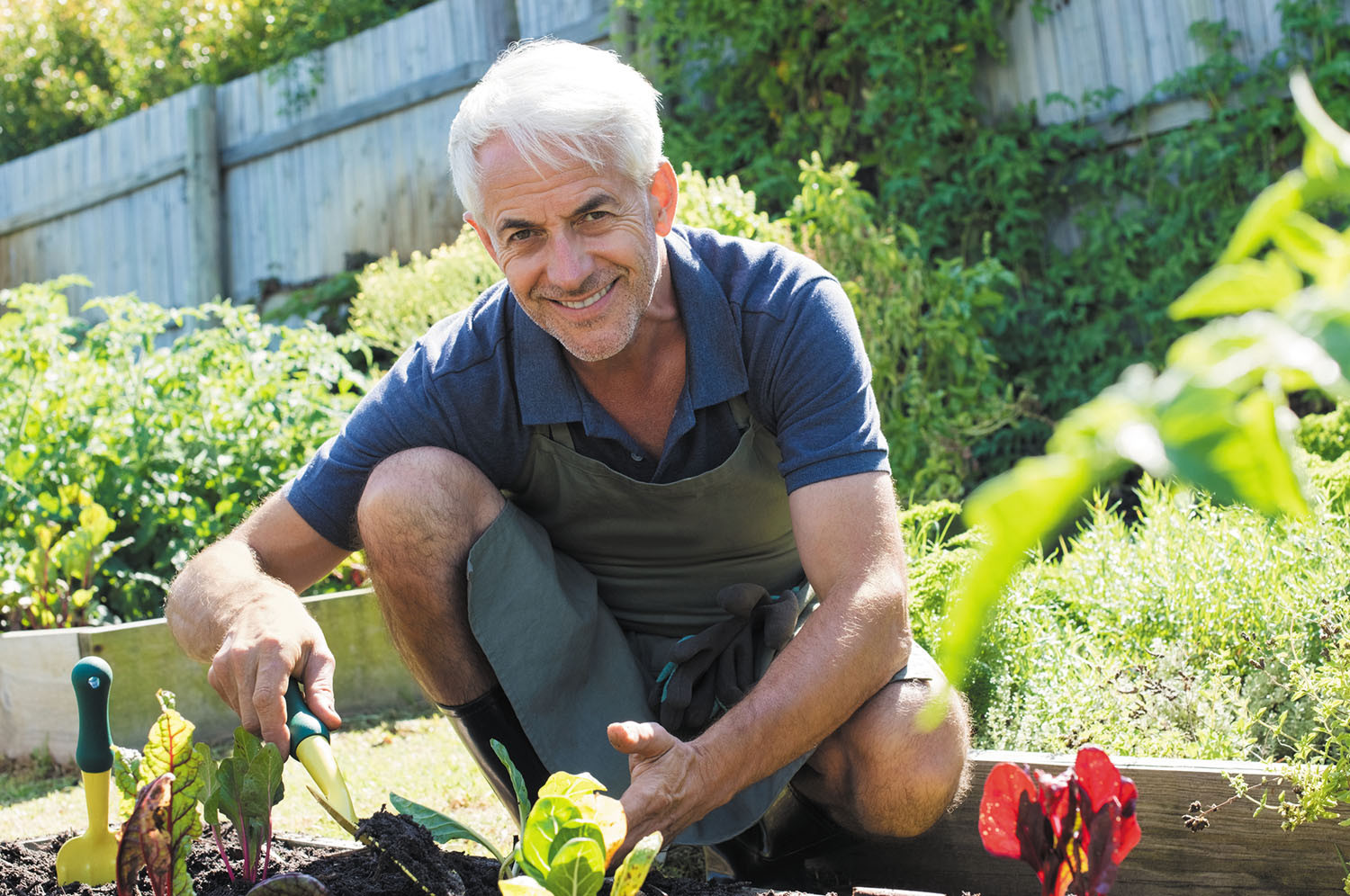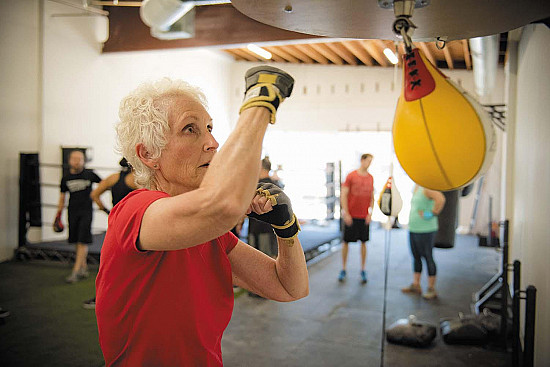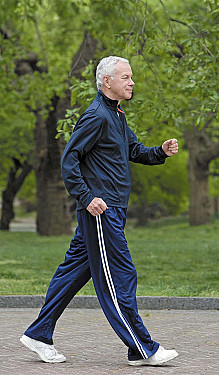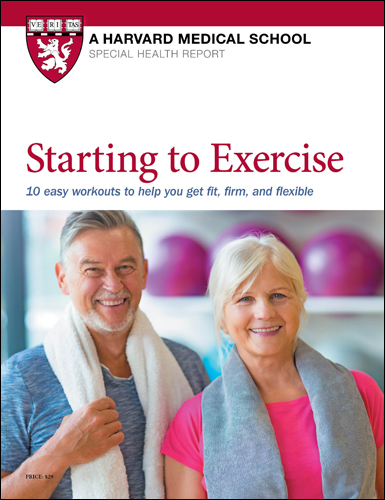Three moves for functional fitness
These exercises can help make everyday movements easier.
- Reviewed by Howard E. LeWine, MD, Chief Medical Editor, Harvard Health Publishing; Editorial Advisory Board Member, Harvard Health Publishing

All older adults can benefit from functional fitness exercises — those that focus on the muscles needed for basic everyday actions, like squatting, bending, reaching, and twisting.
"As we age, the ability to safely and effectively perform simple movements can help older adults stay active, reduce injury, and maintain independent living," says Shawn Pedicini, a physical therapist with Harvard-affiliated Spaulding Rehabilitation Network. "Focusing more on functional fitness is a way to achieve these goals."
The big three
An all-around exercise routine that addresses the major muscle groups is ideal for improving functional fitness. Still, you should add specific exercises that also mimic basic movements.
While there are many movements involved in functional fitness, the ones older adults should master include getting up and down from the ground or a seated position, bending down and lifting objects, and carrying heavy or bulky items. Here are three functional fitness exercises that address these skills. Add them to your regular workout, or perform them together as a single routine.
Standing up against falling downFunctional fitness can improve balance and coordination and reduce the risk of falling. A study published online June 18, 2021, by Archives of Public Health found that adults ages 65 and older who performed best on functional fitness tests, such as grip strength, sit-to-stand, and single-leg stance, had a lower risk of falling compared with those who did not perform well on the tests. |
Getting up and down: Stationary split squat
The stationary split squat targets the quadriceps muscles (in the fronts of the thighs), the gluteals (in the buttocks), and the hamstrings (in the backs of the thighs). The exercise helps you perform activities such as getting out of a chair or car, going up and down stairs, and kneeling and rising from the ground, like when gardening. "Because of the positioning of your feet, it also provides a good challenge to your balance," says Pedicini.
Starting position: Step forward with your left leg as if performing a lunge. Keep the heel of your right foot raised. (Hold on to the back of a chair for stability, if needed.)
Movement: Keeping your torso straight, slowly lower your right leg until your knee taps the floor. Then push back up to the lunge position. (You can place a pillow on the floor to cushion the tapping knee.) Do five to 10 times, then switch legs and repeat to complete one set. Perform two to three sets.
Alternative: Perform a half squat: Stand with your feet shoulder-width apart and your arms at your sides. Slowly bend your knees, lowering your buttocks about eight inches, as if sitting back into a chair. Hold for a few seconds and then return to the starting position. Complete eight to 12 times for one set, and do up to three sets.
Bending down and lifting: Kettlebell high pull
This exercise improves your ability to squat and reach objects on the ground. It also increases your pulling strength, which helps you lift heavy objects, such as full laundry baskets or bags of potting soil.
Starting position: Stand with your feet a little wider than shoulder-width apart and your toes pointing slightly out to the sides. Hold a kettlebell with both hands down in front of you. (You can also use a dumbbell by holding it at both ends.)
Movement: Bend your knees and lower into a squat. Hold for a second. In one fluid movement, bend your elbows out to the sides and pull the kettlebell or dumbbell up to about chest height as you stand up. Hold again. This completes one rep. Return to the starting position and do eight to 12 times for one set. Perform one to three sets. For more of a challenge, hold the kettlebell or dumbbell in one hand only and do the pulls with one arm at a time.
Alternative: Place the kettlebell or dumbbell on a chair, so you begin lifting at a higher level. You also can do the pull movement without squatting.
Carrying: Farmer's walk
This strengthens your core and glutes and improves grip strength, so you can carry objects with better control.
Starting position: Stand tall and hold a dumbbell or kettlebell in each hand with your arms at your sides like you would carry buckets of water.
Movement: Walk a distance of about 20 feet, back and forth, three to five times, resting when needed. Maintain good posture with your head up and shoulders back.
Alternative: Hold the dumbbell or kettlebell in only one hand and walk the same distance in one direction. (Make sure you don't lean to the side as you walk.) Switch the weight to the other hand and walk back to complete one trip.
Image: © Ridofranz/Getty Images
About the Author

Matthew Solan, Executive Editor, Harvard Men's Health Watch
About the Reviewer

Howard E. LeWine, MD, Chief Medical Editor, Harvard Health Publishing; Editorial Advisory Board Member, Harvard Health Publishing
Disclaimer:
As a service to our readers, Harvard Health Publishing provides access to our library of archived content. Please note the date of last review or update on all articles.
No content on this site, regardless of date, should ever be used as a substitute for direct medical advice from your doctor or other qualified clinician.
















